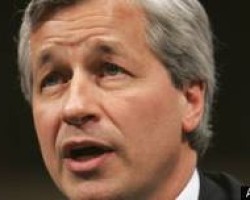
Testimony of Jamie Dimon
Chairman & CEO, JPMorgan Chase & Co.
Before the U.S. Senate Committee on Banking, Housing and Urban Affairs
Washington, D.C.
June 13, 2012
Chairman Johnson, Ranking Member Shelby, and Members of the Committee, I am appearing today to discuss recent losses in a portfolio held by JPMorgan Chase’s Chief Investment Office (CIO). These losses have generated considerable attention, and while we are still reviewing the facts, I will explain everything I can to the extent possible.
JPMorgan Chase’s six lines of business provide a broad array of financial products and services to individuals, small and large businesses, governments and non-profits. These include deposit accounts, loans, credit cards, mortgages, capital markets advice, mutual funds and other investments.
What does the Chief Investment Office do?
Like many banks, we have more deposits than loans – at quarter end, we held approximately $1.1 trillion in deposits and $700 billion in loans. CIO, along with our Treasury unit, invests excess cash in a portfolio that includes Treasuries, agencies, mortgage-backed securities, high quality securities, corporate debt and other domestic and overseas assets. This portfolio serves as an important source of liquidity and maintains an average rating of AA+. It also serves as an important vehicle for managing the assets and liabilities of the consolidated company. In short, the bulk of CIO’s responsibility is to manage an approximately $350 billion portfolio in a conservative manner.
While CIO’s primary purpose is to invest excess liabilities and manage long-term interest rate and currency exposure, it also maintains a smaller synthetic credit portfolio whose original intent was to protect – or “hedge” – the company against a systemic event, like the financial crisis or Eurozone situation. Among the largest risks we have as a bank are the potential credit losses we could incur from the loans we make. The recent problems in CIO occurred in this separate area of CIO’s responsibility: the synthetic credit portfolio. This portfolio was designed to generate modest returns in a benign credit environment and more substantial returns in a stressed environment. And as the financial crisis unfolded, the portfolio performed as expected, producing income and gains to offset some of the credit losses we were experiencing.
What Happened?…
[ipaper docId=96957623 access_key=key-gwbowjjmb8ukwfqu05t height=600 width=600 /]
© 2010-19 FORECLOSURE FRAUD | by DinSFLA. All rights reserved.


